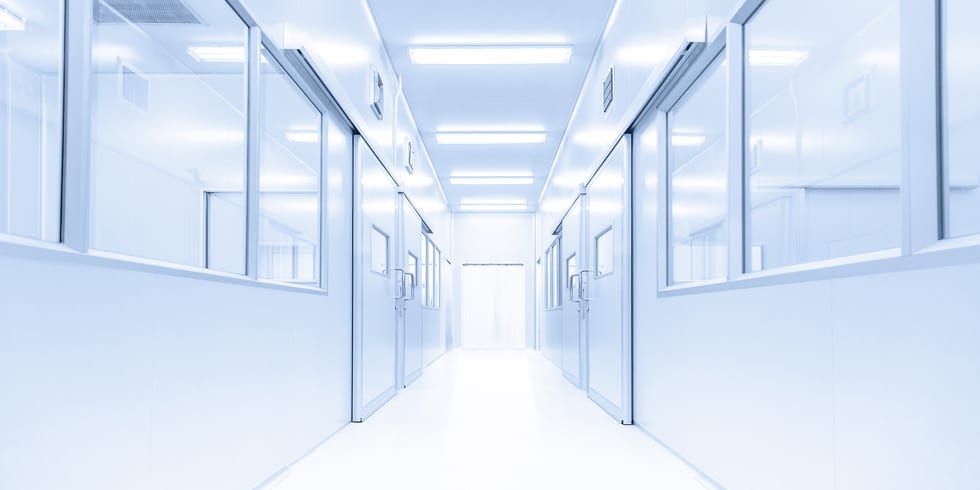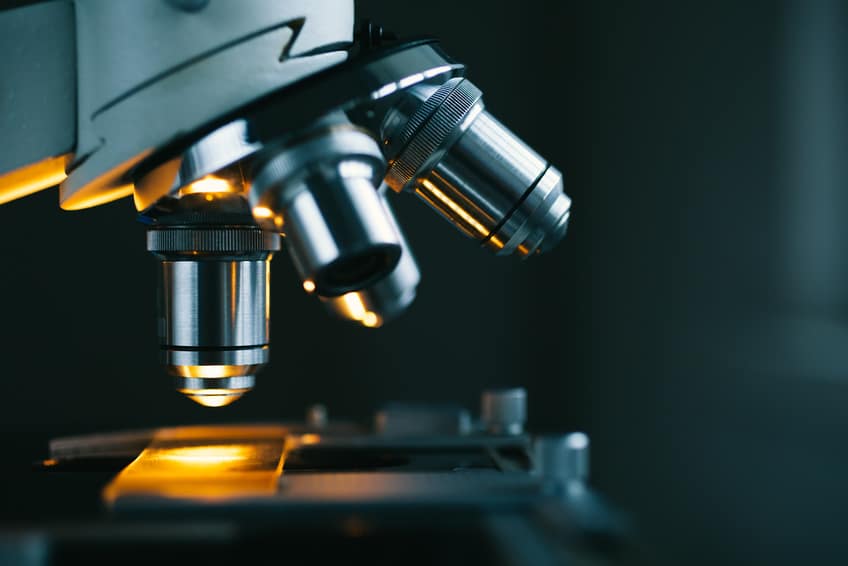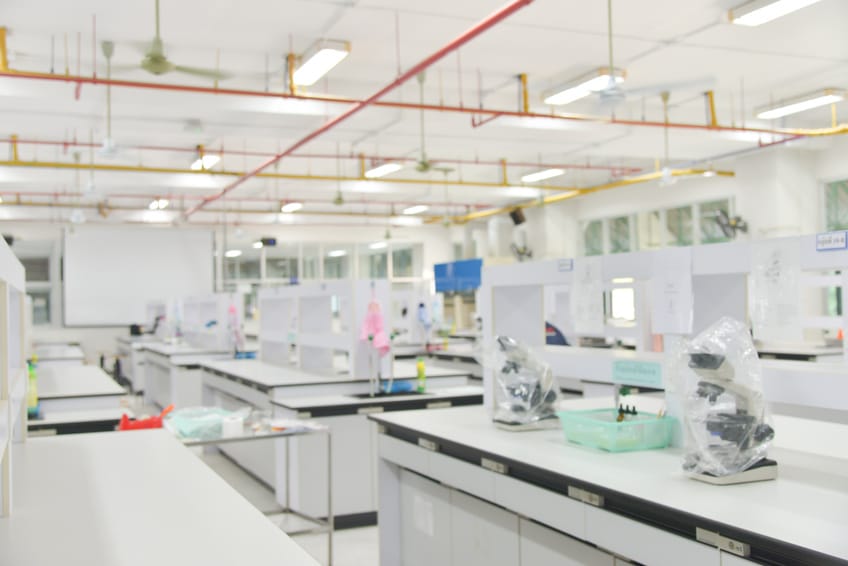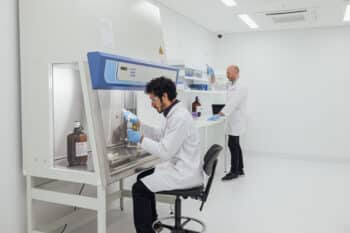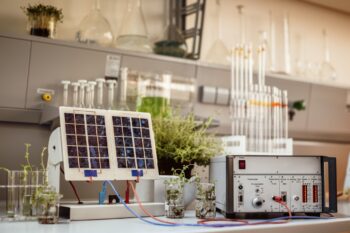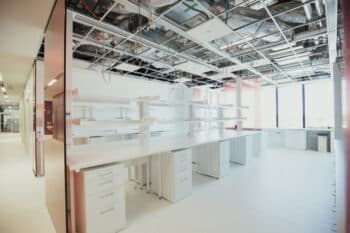[vc_row equal_height=”yes” content_placement=”middle”][vc_column][vc_column_text]As working practices have changed over the years, with technology and increased automation changing the way scientists work; science laboratory design has also changed significantly. Modern labs need to be capable of responding and adapting to the needs of the team, whether a project requires collaboration, wet lab work, or computer analysis. This has led to a growing diversity in lab design, from flexible labs that can be completely altered depending on the needs of the team to fixed-purpose specialist labs that are carefully designed for one field of research. This guide to lab design explains the different types available and how they can help your team to achieve more effective research and more accurate results.
Quick Navigation
Generic Labs
A lab is described as generic when it is part of a group of labs that are all the same size and have the same basic cupboards and engineering services. This type of lab is a great option for research suites that are being built without a specific team and their needs in mind. From an administrative standpoint, they make a lot of sense since each team is given the same basic equipment as a starting point. Some of the best generic labs have an element of flexibility, which allows each team to adapt the lab to better suit their needs. They can even be designed with mobile cupboard everywhere, except for fume hoods and sinks, which allows the whole lab to be moved around to suit the team.
Flexible Labs
Flexible lab design has been growing in popularity and it is easy to see why. Flexible labs allow the space to be adapted to new teams and new research, without having to employ a team of contractors to reconfigure the lab. Instead, it can be done with much lower cost and disruption by the in-house maintenance team. More and more lab owners are beginning to see the benefits of this type of design, despite the larger initial outlay that it requires when compared to a more generic lab design. With moveable cupboard solutions and space flexibility, the longevity of this type of lab design makes it a sensible investment that costs less over time than more fixed designs.
Sustainable Labs
Sustainability is becoming a big concern in lab design, with research facilities looking for ways to maximise efficiency whilst minimising their environmental impact. From utilising sunlight to reduce the need for artificial heat and light, to reducing the exhaust rate through fume hoods to get a better balance between safety and sustainability, there are many examples of sustainable lab design. Some labs are now being built with sustainability in mind, using ethically sourced materials and designed to make the most of natural resources. These not only provide significant cost savings over time, but they also reduce the environmental impact of science labs, which can be significant.
Collaborative Labs
Modern science is a highly collaborative activity, with the most successful scientists having an in-depth knowledge of other professionals’ work. The best lab designs not only facilitate, but encourage this kind of collaborating, providing meeting spaces where ideas can be discussed as well as labs that encourage the teams to work together. Office space and write-up areas are also important design elements that shouldn’t be left out of the modern lab. These allow people working in different areas to come together and work in teams on developing research and analysing research, which is often the foundation of research breakthroughs. From meeting places and break rooms that let different teams mix, to labs that can be reconfigured to facilitate collaboration between interdisciplinary team members, labs that promote collaboration are often the cornerstone of successful teams.
Research facilities will usually include both wet and dry labs, designed for different types of research. Wet labs usually include fume hoods, sinks, chemical-resistant surfaces and other equipment designed for research that includes chemicals and other substances. Dry labs tend to be more computer intensive, set up with requirements for electrical and data wiring. As technology develops, lab automation and the use of the computer mean that wet lab space is being reduced and dry lab space is being increased. More and more scientists spend a significant proportion of their time at the computer, meaning that more labs are being designed with these spaces in mind.
Even in wet labs, there is often a requirement for adapting the space for computer use. In fume hoods, for example, voice-activated computers are being used to get around the safety hazards created by traditional laptops. Creating hardware enclosures or other facilities to ensure the security of computers in a wet lab environment is a design issue that is becoming increasingly important.
If you want to redesign your lab to better suit the needs of your team or your research, why not see if the team at InterFocus can help? For more information about our bespoke fitted labs, visit our homepage or call our friendly and knowledgeable team on 01223 894 833.

